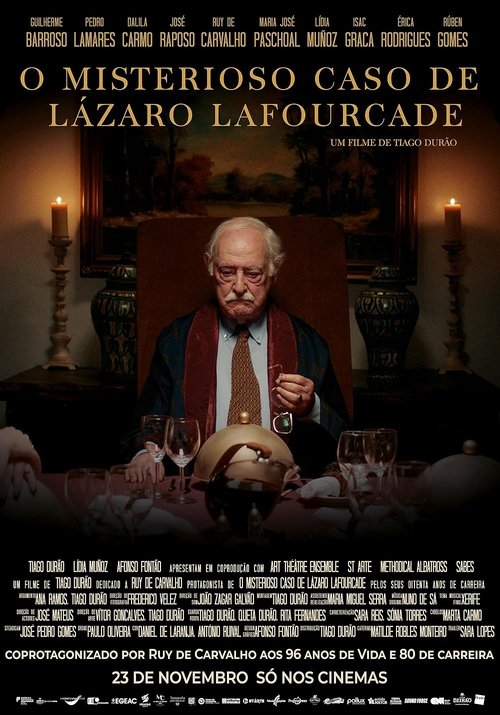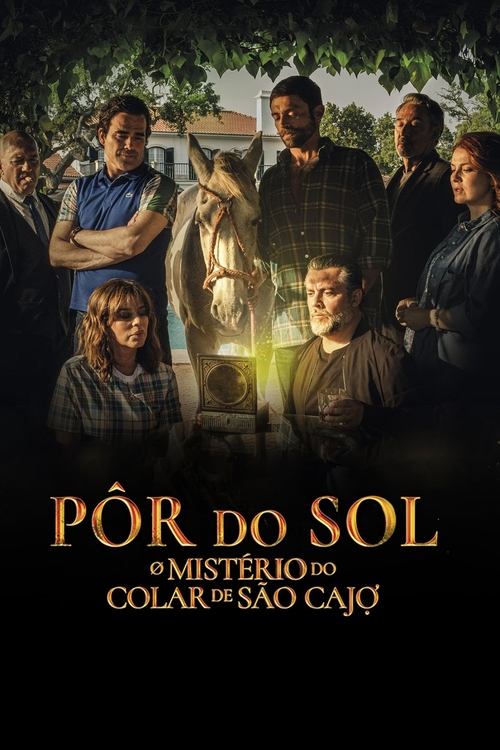
Ask Your Own Question
What is the plot?
More Movies Like This
Browse All Movies →What is the ending?
In the ending of "The Babbling Boil," the protagonist, Clara, confronts the source of the boil that has plagued her town. After a tense showdown, she manages to destroy the boil, but not without significant personal sacrifice. The town begins to heal, and Clara finds a sense of closure, though she is left changed by the experience. The other main characters, including her childhood friend Mark and the town's mayor, come to terms with their own roles in the events that unfolded.
As the film draws to a close, Clara stands at the edge of the town, looking out over the landscape that has been both her home and her prison. The sun sets, casting a warm glow over the scene, symbolizing hope and renewal. The townspeople begin to rebuild, and Clara, though scarred, feels a sense of purpose as she prepares to help her community move forward.
The final scenes of "The Babbling Boil" unfold with a palpable tension as Clara, the protagonist, stands at the edge of the town square, her heart racing. The boil, a grotesque manifestation of the town's collective fears and secrets, looms ominously in the center, pulsating and bubbling with a life of its own. Clara's childhood friend, Mark, stands beside her, his expression a mix of determination and fear. They both know that this confrontation is not just about defeating the boil; it's about confronting the darkness that has seeped into their lives.
As Clara steps forward, she recalls the moments that led her here--the whispers of the townspeople, the way the boil seemed to grow stronger with each secret kept. She feels the weight of her community's pain on her shoulders, but she also feels a flicker of hope. With a deep breath, she raises the makeshift weapon she crafted from the remnants of her past, a symbol of her resolve to face the truth.
The scene shifts to the boil, which begins to react violently to Clara's presence. It thrashes and emits a cacophony of sounds, echoing the fears of the townspeople. Clara's heart pounds as she recalls the faces of her friends and family, each one affected by the boil's presence. She knows that to defeat it, she must confront not only the physical manifestation but also the emotional scars it represents.
In a climactic moment, Clara plunges her weapon into the boil, and a blinding light erupts from the center. The townspeople, who have gathered at a distance, watch in awe and horror as the boil begins to dissolve, releasing a wave of energy that washes over the square. Clara is thrown back by the force, landing hard on the ground. Mark rushes to her side, his eyes wide with concern, but Clara manages a weak smile, knowing that they are finally free from the boil's grip.
As the dust settles, the townspeople begin to emerge from their hiding places, cautiously approaching the remnants of the boil. Clara, though battered and bruised, stands up with Mark's help. The mayor, who had been a figure of authority throughout the film, steps forward, his expression one of relief mixed with regret. He acknowledges the role he played in allowing the boil to grow unchecked, and for the first time, he seems vulnerable.
The final moments of the film show the town beginning to heal. Clara, now a symbol of resilience, takes on a leadership role, helping to guide her community through the aftermath. She organizes efforts to rebuild, and as she walks through the streets, she sees familiar faces--friends and neighbors who had once been consumed by fear now working together, united in their shared experience.
The camera pans out, capturing the sunset over the town, casting a warm glow that signifies hope and renewal. Clara stands at the edge of the town, looking out over the landscape that has been both her home and her prison. Though she is forever changed by the experience, she feels a sense of purpose as she prepares to help her community move forward. The film ends with a lingering shot of Clara, her expression a mix of determination and hope, as the screen fades to black.
Is there a post-credit scene?
In "The Babbling Boil," there is indeed a post-credit scene that adds an intriguing layer to the film's narrative.
As the credits roll, the screen fades to black before transitioning to a dimly lit room filled with medical equipment. The camera slowly pans across the room, revealing a large, bubbling cauldron-like device that emits a faint, eerie glow. The sound of bubbling water and a low, ominous hum fills the air, creating a sense of foreboding.
Suddenly, a figure steps into the frame, partially obscured by shadows. It's Dr. Evelyn Hart, the film's antagonist, who had been presumed defeated in the climax. Her expression is one of determination mixed with a hint of madness. She approaches the cauldron, her hands trembling with excitement as she stares into its depths.
In a hushed tone, she begins to speak, revealing her plans to harness the power of the Babbling Boil for her own purposes. "They think they've won," she whispers, a manic glint in her eyes. "But this is just the beginning."
As she reaches into the cauldron, the bubbling intensifies, and a flash of light erupts, momentarily illuminating her face, which is twisted in a mix of triumph and obsession. The scene ends abruptly with a loud pop, leaving the audience in suspense about the potential consequences of her actions.
This post-credit scene not only teases a possible sequel but also reinforces the themes of obsession and the dangers of unchecked ambition that permeate the film.
What is the significance of the character named Dr. Helen Carter in the story?
Dr. Helen Carter is a pivotal character in 'The Babbling Boil,' serving as the lead researcher investigating the mysterious outbreak. Her determination to uncover the truth is driven by a personal tragedy; she lost her brother to a similar affliction years ago. This backstory adds depth to her character, showcasing her emotional turmoil and relentless pursuit of a cure, which ultimately leads her to make morally ambiguous decisions.
How does the town react to the outbreak of the boil disease?
The town's reaction to the outbreak is one of panic and denial. Initially, many residents dismiss the boil disease as a hoax or exaggeration, leading to a sense of community division. As the situation escalates, fear takes hold, resulting in mob mentality and scapegoating of those who are infected. This creates a tense atmosphere, highlighting the emotional strain on families and friendships as trust erodes.
What role does the character of Marcus play in the development of the plot?
Marcus, a local journalist, plays a crucial role in the development of the plot by uncovering hidden truths about the origins of the boil disease. His investigative work leads him to discover a connection between the outbreak and a nearby chemical plant. His character embodies the struggle for truth in the face of overwhelming fear, and his relationship with Dr. Helen Carter evolves from skepticism to collaboration as they work together to expose the real cause of the epidemic.
What is the relationship between Dr. Helen Carter and her assistant, Lisa?
The relationship between Dr. Helen Carter and her assistant, Lisa, is complex and layered. Initially, Lisa admires Helen's brilliance and is eager to learn, but as the story progresses, she becomes increasingly concerned about Helen's obsessive behavior and ethical boundaries. This tension culminates in a pivotal scene where Lisa confronts Helen about her methods, revealing her own fears about the consequences of their research. Their dynamic reflects the broader themes of loyalty, ambition, and the moral dilemmas faced in the pursuit of knowledge.
What are the consequences of the town's decision to quarantine the infected individuals?
The decision to quarantine the infected individuals leads to devastating consequences for the community. Families are torn apart, as loved ones are separated and stigmatized. The quarantine creates a sense of isolation and despair, exacerbating the emotional toll on both the infected and the healthy residents. This decision also sparks protests and civil unrest, as some townspeople demand the release of their loved ones, while others advocate for stricter measures. The emotional weight of these events highlights the fragility of human connections in the face of crisis.
Is this family friendly?
"The Babbling Boil," produced in 2022, is not considered family-friendly due to its mature themes and unsettling content. Here are some potentially objectionable or upsetting aspects that may affect children or sensitive viewers:
-
Body Horror Elements: The film features graphic depictions of a mysterious boil that grows on a character, leading to disturbing visual effects that may be unsettling for younger audiences.
-
Intense Emotional Scenes: Characters experience significant emotional turmoil, including fear, anxiety, and despair, which may be distressing for sensitive viewers.
-
Violent Imagery: There are scenes that include violence or aggressive behavior, which could be alarming for children.
-
Themes of Isolation and Despair: The narrative explores themes of isolation and the psychological impact of the boil on relationships, which may be heavy for younger viewers to process.
-
Dark Humor: The film employs dark humor that may not be appropriate for all audiences, as it juxtaposes comedic elements with serious and grotesque situations.
Overall, the film's content may not be suitable for children or those who are sensitive to horror and psychological themes.
























